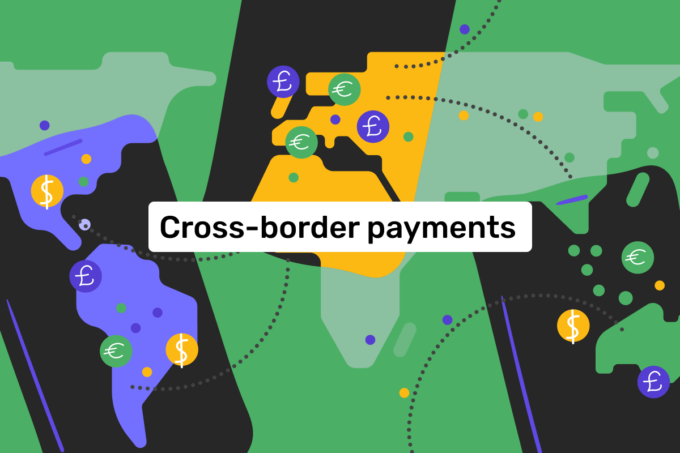In an ever-evolving digital world, the payment processing landscape is significantly transforming. The advent of payment facilitators (PayFacs) is revolutionizing how businesses handle transactions, offering streamlined, efficient, and more inclusive methods. This article delves into the pivotal role of PayFacs in shaping the future of payment processing, marking a significant shift towards more agile and adaptable financial ecosystems.
The Rise of the Payment Facilitator Model

The PayFac model significantly revolutionizes the payment industry by integrating various financial services into a unified framework. This model transcends traditional transaction processing by encompassing a comprehensive suite of services such as transaction handling, fraud detection, and financial reconciliation.
This integrated approach is particularly advantageous for small and medium-sized businesses, which might not be able to handle complex financial operations. By centralizing these services, PayFacs streamlines financial management, allowing businesses to concentrate more on growth and innovation rather than on administrative burdens.
Additionally, PayFacs brings cutting-edge technological tools to businesses of all sizes. Features like real-time reporting and detailed analytics are crucial for businesses to interpret and act on market trends effectively. These tools not only make advanced financial capabilities accessible to a broader range of businesses but also contribute to a more vibrant and innovative financial ecosystem. The PayFac model fosters a more adaptable and responsive business environment, enabling businesses to navigate the evolving digital landscape more effectively.
Enhanced Merchant Onboarding and Experience

Expanding further on the advantages of the PayFac model for merchant onboarding, it’s important to highlight how this approach facilitates a broader range of payment options for businesses. By enabling easy integration with various payment platforms, PayFacs ensures that businesses can accept payments through multiple channels, catering to a diverse customer base. This flexibility is not just convenient but also helps in tapping into new customer segments.
Moreover, the PayFac model’s swift onboarding process is a boon for businesses in dynamic industries where adapting to market changes quickly is essential. Businesses can focus more on core activities such as product development, marketing, and customer service by minimizing the time and resources spent on setting up payment processing.
Additionally, PayFacs often come with built-in compliance with various international standards and regulations. This benefits businesses looking to expand globally, reducing the complexity and risk of understanding and adhering to different regulatory environments.
Customization and Control

Expanding further on the versatility and customization PayFacs provide, it’s important to emphasize their role in enhancing user engagement and business efficiency. PayFacs offers dynamic solutions for businesses to adapt their payment processes to match evolving market trends and customer preferences.
This includes advanced features like dynamic pricing, where prices can adjust in real time based on demand, seasonality, or customer loyalty. Such flexibility ensures businesses stay competitive and responsive to market dynamics.
Moreover, PayFacs are instrumental in bridging the gap between online and offline payment experiences. They enable a seamless omnichannel payment strategy, where customers can enjoy a consistent experience whether they shop online, in-store, or through mobile applications. This holistic approach is critical in today’s retail environment, where blending digital and physical shopping experiences is increasingly common.
The analytics provided by PayFacs extend beyond mere transactional data. They offer deep insights into market trends, customer preferences, and even predictive analytics that can forecast future purchasing patterns. This information is invaluable for businesses tailoring their marketing strategies, inventory management, and overall business planning.
Additionally, the scalability of PayFacs is a crucial aspect of growing businesses. They offer scalable solutions that grow with the business, ensuring that its payment processing capabilities can adapt without significant overhauls as a business expands. This scalability is especially beneficial for startups and SMEs with the potential for rapid growth.
Innovations in Security and Compliance

Expanding on the digital security theme, PayFacs is implementing robust measures and pioneering innovative security technologies. Their role extends beyond basic compliance, delving into advanced fraud detection algorithms and real-time monitoring systems. These tools are crucial for identifying and preventing fraudulent activities, and safeguarding the merchant and the consumer.
Additionally, PayFacs enhances overall payment ecosystem security by continuously updating and refining its security protocols in line with evolving cyber threats. This dynamic approach ensures that businesses are always ahead of potential vulnerabilities, offering a level of security that is difficult to achieve independently.
Furthermore, by consolidating various security measures under one umbrella, PayFacs simplifies the complexity associated with payment security. This consolidation not only streamlines the process but also ensures a higher standard of security, as all aspects of the transaction process are monitored and managed by experts in the field.
The Impact on E-commerce and Mobile Payments
The influence of the PayFac model extends significantly in e-commerce and mobile payments, sectors that have seen exponential growth due to digital advancement. PayFacs adeptly caters to the needs of these digital platforms by offering flexible and scalable solutions. This flexibility is vital for businesses that operate in the dynamic online marketplace, where consumer preferences and technology trends can shift rapidly.
PayFacs also play a critical role in unifying the payment experience across various channels. They enable businesses to provide a cohesive and secure transaction process, whether the customer is shopping on a desktop, mobile app, or social media platform. This uniformity is essential in building consumer trust and loyalty, as customers expect a seamless experience regardless of the shopping channel.
Additionally, the PayFac model supports the growing trend of personalized shopping experiences. Through advanced data analytics, PayFacs helps businesses tailor their offerings and payment options to individual customer preferences, enhancing the overall shopping experience. This personalization is increasingly becoming a differentiator in the competitive online retail space.
Moreover, PayFacs are instrumental in fostering innovation within the payment industry, especially in mobile payments. They are at the forefront of integrating new technologies such as Near Field Communication (NFC) and QR codes, which are becoming increasingly popular in mobile transactions. This innovation caters to tech-savvy consumers and paves the way for future advancements in payment processing.
The Role of Analytics and Data

Enhancing the discussion on the role of data analytics in the PayFac model, it’s essential to delve deeper into how this technology is revolutionizing risk management and fraud detection. PayFacs, through sophisticated data analysis, can discern intricate patterns and anomalies in transaction data, enabling them to identify potential fraud with greater accuracy. This capability is critical in an era where financial scams and digital theft are increasingly sophisticated.
The analytics extend beyond fraud detection; they offer comprehensive risk assessment tools. By analyzing vast amounts of transaction data, PayFacs can identify and mitigate a broad range of financial risks, including credit risks and operational risks. This holistic approach to risk management is invaluable in maintaining the integrity of the payment process and safeguarding against financial losses.
Additionally, the data-driven insights PayFacs provides are a powerful tool for strategic business planning. By understanding customer purchasing habits, businesses can make informed decisions about product development, marketing strategies, and inventory management. This level of insight can lead to more effective business operations and increased profitability.
Integrating AI and machine learning transforms the PayFac model into a more predictive and proactive system. By leveraging these technologies, PayFacs can anticipate market trends, identify emerging risks, and offer predictive analytics that helps businesses stay ahead of the curve. This forward-thinking approach is crucial for businesses operating in rapidly changing markets.
Global Expansion and Cross-Border Transactions
The PayFac model is not just revolutionizing payment processing on a local scale; it’s also playing a pivotal role in facilitating global commerce. In today’s interconnected world, the ability to conduct cross-border transactions efficiently is crucial for businesses looking to expand their reach. PayFacs is instrumental in this regard, offering solutions that navigate the complexities of international payments, including currency conversion, compliance with local financial regulations, and tax requirements.
This global approach is especially beneficial for e-commerce platforms and businesses with international customers. By simplifying cross-border transactions, PayFacs enables these businesses to offer their products and services to a broader audience without the logistical and financial hurdles associated with international expansion.
Furthermore, PayFacs are fostering a more inclusive global economy. Providing access to advanced payment solutions empowers businesses in emerging markets, enabling them to compete globally. This democratization of financial tools is not only boosting international trade but also contributing to economic growth in various regions worldwide.
Conclusion
The ongoing evolution of the PayFac model is significantly reshaping the future of payment processing. Its impact is profound, particularly in enhancing merchant onboarding, providing customizable payment solutions, ensuring robust security, and streamlining e-commerce and mobile payments. This evolution is not just about improving existing processes; it’s about introducing groundbreaking innovations and efficiencies in digital transactions.
The PayFac model is emerging as a critical driver of change, offering scalable, flexible solutions that cater to the diverse needs of businesses, regardless of their size. Its continued development and adaptation to emerging technologies and market demands promise to further revolutionize the digital transaction landscape, solidifying its role as a transformative force in business and commerce.










